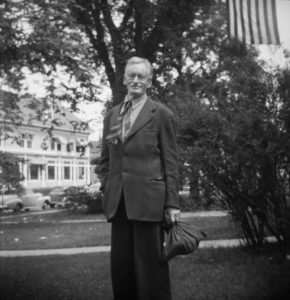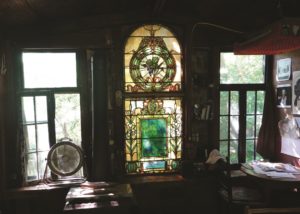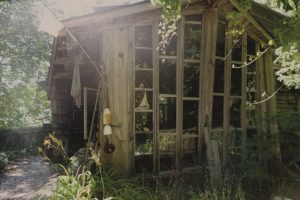Fewer and fewer people these days have a clear idea of who Harry Kemp was. Some might recognize his name from Harry Kemp Way, the road in Provincetown where Outer Cape Health Services is located, or they might know of him vaguely as the “Poet of the Dunes,” someone who lived in a dune shack and wore a cape. As those who actually encountered him die off, his memory rapidly moves into the realm of myth.

Born in Youngstown, Ohio, in 1883, Kemp left home at age 17 and traveled around the world as a seaman and self-styled tramp. One of his first brushes with fame was as a student at the University of Kansas. He got on the front page of the New-York Tribune by arriving on the first day of school in a boxcar.
Indeed, Kemp loved spectacle, and he was skilled at getting his name in the newspapers. He probably would be delighted to be featured in the Provincetown Independent on the occasion of the 60th anniversary of his death on Aug. 8, 1960. This year is doubly significant, because it is also the year of Provincetown 400.
Not a lot of people know that Kemp started the Provincetown Pilgrims Association, dedicated to correcting the historical misunderstanding that the Pilgrims first landed in Plymouth. He mailed Provincetown sand to the governors of 48 states with the rhyme, “Not on Plymouth Rock but on Provincetown Sand,/ The Pilgrim Fathers first came to land.”
Though Kemp is best known for his autobiography, Tramping on Life, he yearned for success as a poet, which he never truly achieved. Dubbed the “last bohemian,” he befriended such larger-than-life literary figures in Greenwich Village and Provincetown as Upton Sinclair, Sinclair Lewis, and Eugene O’Neill.
“I met Harry Kemp in the early summer of 1946,” artist Salvatore Del Deo says. “I was 17 years old, and I came to Provincetown to study painting. He was sort of a protective guardian angel to me.”
Kemp introduced Del Deo to his wife, Josephine, at a party celebrating the rediscovery of Shakespeare’s sonnets.

Even when he was older, Kemp would swim in the ocean every day, summer or winter. “He was a tough guy, good with his fists, athletic,” Del Deo says. “I would never want to fight with him, because I saw him fight in one of the bars when a guy said something disparaging about a woman. Harry jumped out of his seat and hit him, right across the table.
“To me, Harry was a man who had tremendous standards, especially for his art,” Del Deo continues. “The one thing that was sad was that he turned to drinking so much that it altered his persona and his values.”
Del Deo says that Kemp found solace in drink after his first wife, Mary Pyne, who was a legendarily beautiful redhead, died of tuberculosis at a very young age.
“He had a high opinion of himself, that’s true, but at one time he deserved it,” Del Deo says. “It’s unfortunate that during the second half of his life, he wrote poetry, but it was not deep enough. He was scoffed at by the poets. He was sort of held in derision, but some people still loved him and remembered what he was.”
In the last years of his life, Kemp moved out of his dune shack, in what is now the Cape Cod National Seashore, and into a cottage on Tasha Hill in the East End of Provincetown that was built for him by Sunny Tasha out of all sorts of reclaimed materials, including a stained-glass window from a demolished church.

Paul Tasha, Sunny’s son, who was six or seven years old when he got to know Kemp, says the poet was not fond of kids. For Tasha, the feeling was mutual: “I didn’t like him,” he says. “He was grouchy, drunk.”
But Tasha says he did enjoy Kemp’s reenactments of the Pilgrims’ first landing: “I liked it, because they let me carry a musket. Ultimately, he was a big, no, a medium fish in a small pond, and his poetry was just OK.”
Kemp, who was diabetic in his later years, died in the Tasha Hill cottage in 1960, after he got his hands on some wine and suffered a cerebral hemorrhage.
In 1969, the select board voted to name the roadway that replaced the New York, New Haven, and Hartford Railroad as Harry Kemp Way, in honor of the tramp poet who once used these tracks to see the world.
‘The Fog,’ by Harry Kemp
The fog fell: lamps were filled and lit;
They glimmered in mid-day, —
And, step by step, men went abroad
Into a world all grey.



